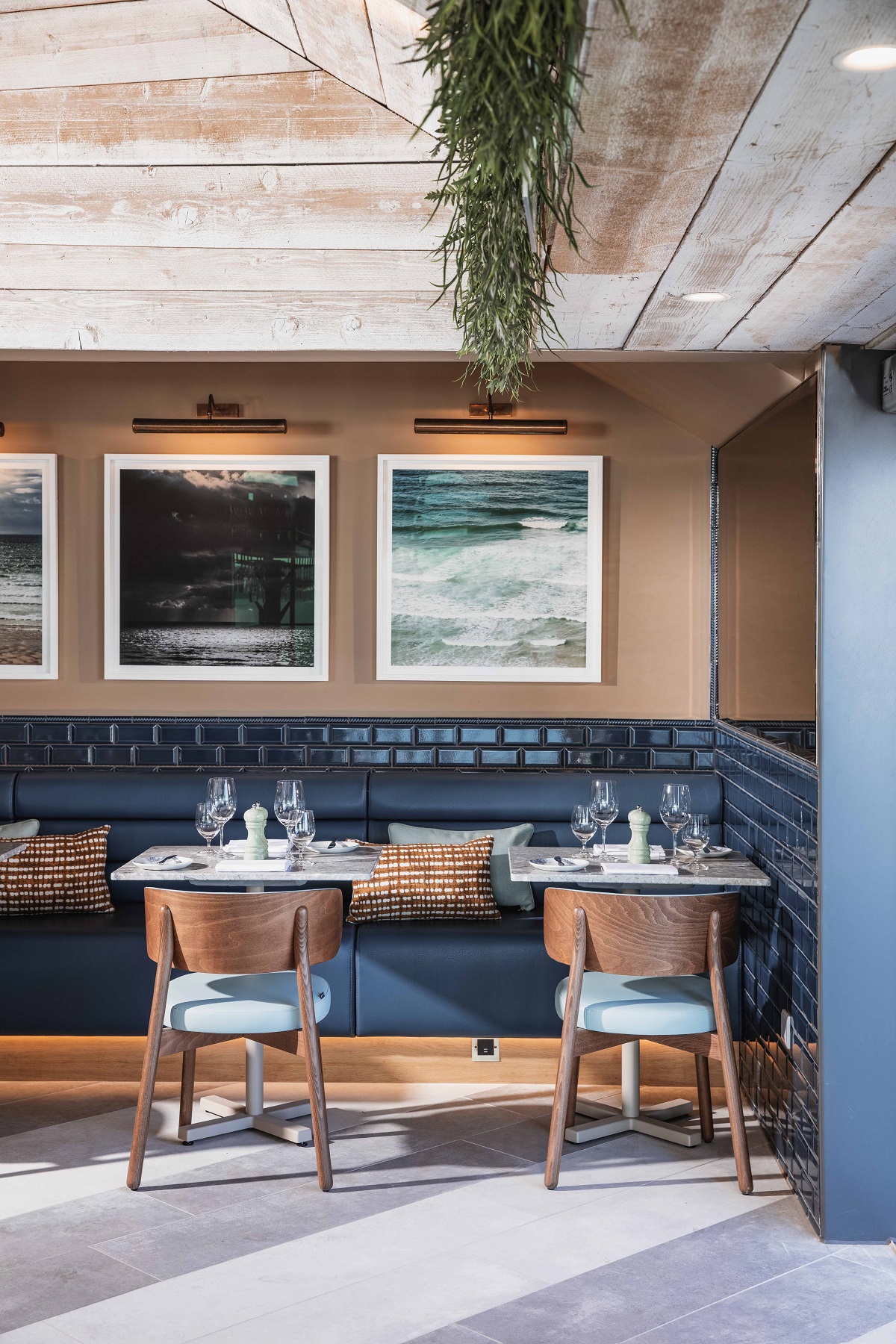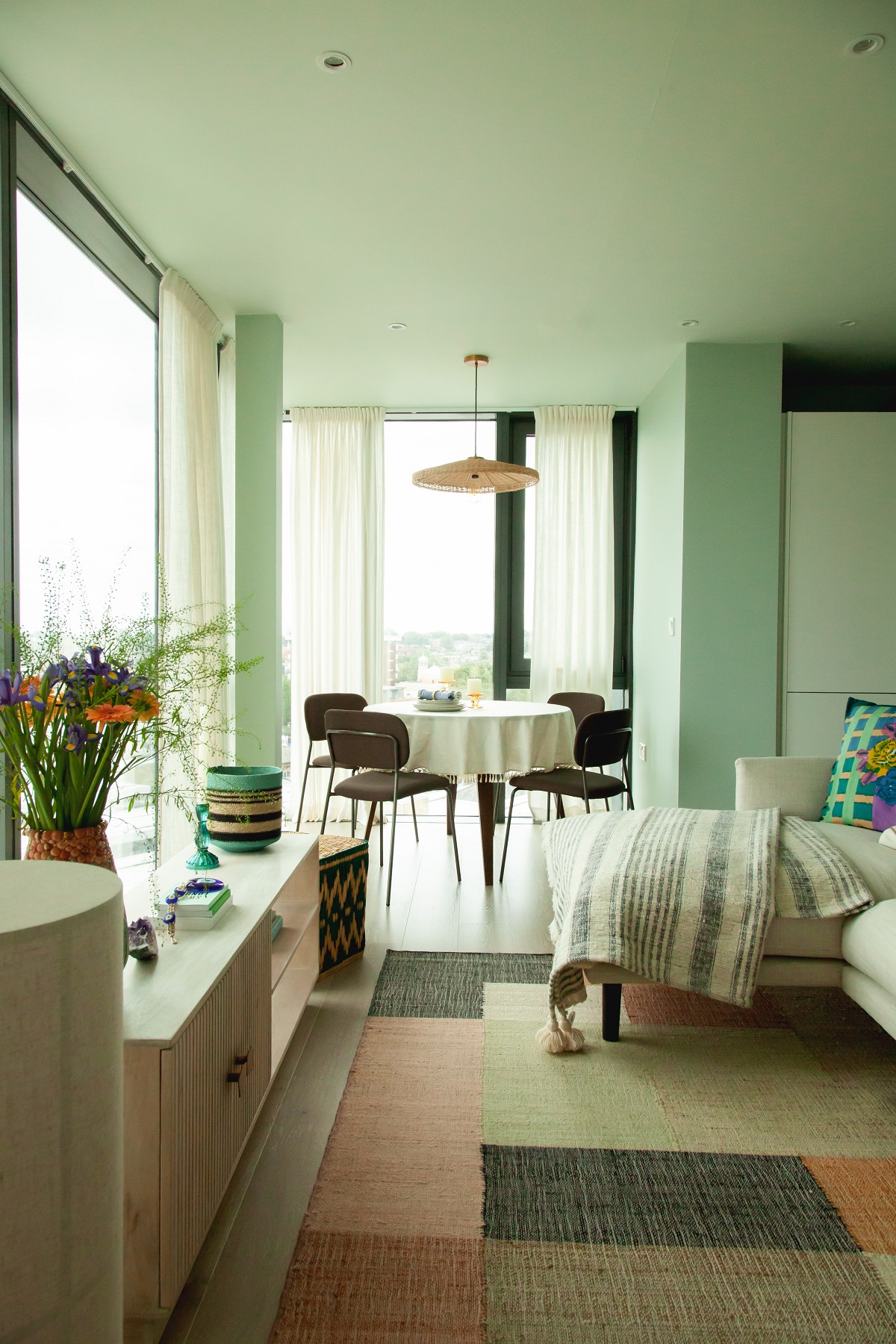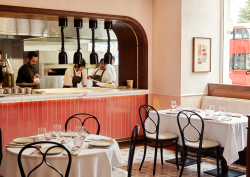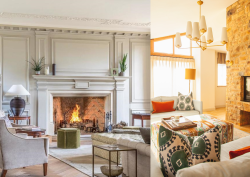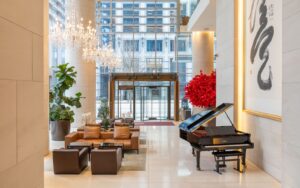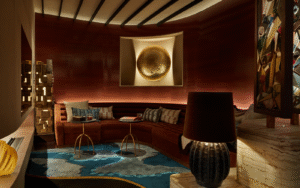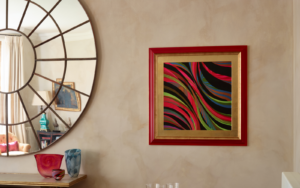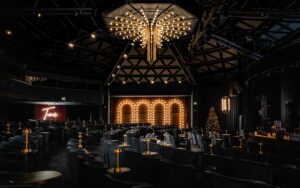‘Stimulating wellness through design’ is a topic that is unquestionably under scrutiny. To cut through the sensory noise, Editor Hamish Kilburn, along with six leading designers, delved into the challenges and opportunities being faced as the experience and expectations of wellness in hospitality evolves…

At a time when hotels and the hospitality sector are taking on the challenges of sustainability, circularity and accessibility – along with a focus on creating experiences and moments of wellbeing within the hotel design arena – has wellness stepped beyond the spa?
In Hotel Designs’ latest roundtable, in association with Geberit, Editor Hamish Kilburn asked a handful of leading interior designers and architects around the table how all the facets of wellness and wellbeing are being integrated into the fabric of a hotel experience and what are the challenges, as well as the points of inspiration, on this journey.
On the panel:
- Wren Loucks: CEO & Creative Director, Be-kin Ltd
- Richard Holland: Co-founding Director, Holland Harvey
- Balkaran Bassan: Senior Design Lead, Blacksheep
- Geraldine Dohogne: Founder, Geraldine Dohogne Design
- Clare McDonald: Founder & Creative Director, Design Command
- Lynne Clapham-Carter: Specification Manager, Geberit
In the recently published Hotel Guest Experience Report 2023, a document put together by Geberit in collaboration with designers and experts in their fields, designer Wren Loucks examined ritual, sensory rich experiences and social sustainability in hotel design. With this in mind, Kilburn started the conversation by asking Loucks what, as a result of her research in this field, inspired her to integrate concepts of wellness into design.
Wren Loucks: As designers we have a real opportunity to create spaces that make people feel good. That is really powerful and is something we need to tune into. As part of this, we need to understand the needs of everyone we are designing for, as well as how different people move through the same space. This process is as much about the people, as it is about the environment and choosing products consciously.
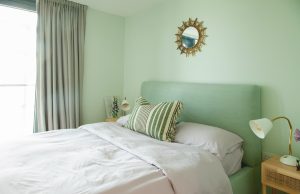
Image credit: Be-kin
HK: Can we broaden our understanding of wellness in design by digging deeper into the social and collaborative aspect of design and wellness?
Richard Holland: This is possibly the least understood aspect of ESG. You will feel well in a space, if you feel good about the objects and the materials that have been used to create it. A lot of our work goes into imbuing stories into the materials we use, especially when we work with social enterprises and charities. Choosing a material, then telling its story, all links back to helping people and communities on different levels. By extension, the design then follows a similar thread. It is understanding that our design decisions have social consequences, which enables us to use spaces to improve people’s lives and experiences, both within that space and as contributing to that space.
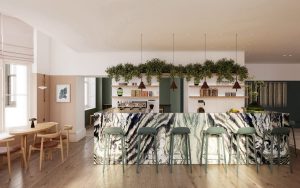
Image credit: Inhabit Hotels / Holland Harvey
HK: Does that mean wellness is now being understood more broadly and are clients more open to those conversations about injecting wellness into the design process?
Balkaran Bassan: There is a greater recognition of all the touchpoints of wellbeing running through a project and that ultimately creates spaces that are more responsive and more layered. The questions are certainly being asked around the relationship between wellness and wellbeing and leading on from that, luxury. All these concepts differ from person to person, from the little moments to the larger statements in design and the challenge for us, as designers, is how we respond to that.
Geraldine Dohogne: I believe we have always wanted to design spaces that generate emotions and facilitate wellbeing through a conscious use of materials, but there are now a lot more opportunities for this from suppliers, together with an increase in guest expectations for wellness elements to be integrated across a design.
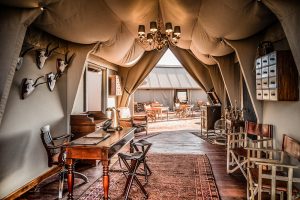
Image credit: Tibod Hermy / Geraldine Dohogne Design
HK: Lets look at those minor moments of wellness – the elements in design that stimulate wellness that are being explored…
WL: We have been doing a lot of workplace design where acoustics and different qualities of sound have been part of the conversation. Diving into these different sensorial elements and how they interact and then in turn, how different people respond, is fascinating and can change the shape of a design.
GD: Scent is another very important element of wellness and wellbeing. There are so many layers to the concept and a hotel is becoming much more than a place to sleep, it is about creating moments of wellbeing on different levels.
Clare McDonald: It’s about all the senses working together, as wellbeing and wellness has become important to everyone. It is no longer about making an interior that is instagram-able and beautiful on the surface – it has to feel impactful. Impactful when occupying the space, but equally when you leave, to have a memory of the space. It is often a sense that brings those moments back – sound, scent, touch.
GD: You don’t necessarily remember the hotel first, you remember a moment. The emotion surfaces first, then the place and the design elements follow on.
HK: With some hotels making the decision to not touch the bathrooms when renovating, are we missing something on the level of design cohesion and enhanced wellness offering by putting the bathrooms on hold?
WL: It really depends on the story – if it is about sustainability or retaining history then it makes sense to keep a bathroom, but if you are exploring a sensory journey then you would need to reconsider that conversation.
Lynne Clapham-Carter: For us at Geberit, it is all about water, which makes it about what you don’t see, as much about what you do see. With concerns around sustainability and water being high on the agenda, the bathroom becomes an important area to focus on when updating a project.
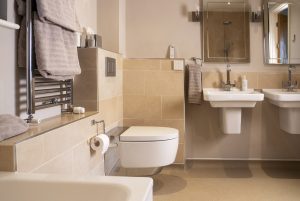
Image credit: Geberit
HK: Is the blurring of boundaries between the bathroom and guestroom a momentary trend, or another element in the wellness conversation?
GD: Integrating a bathroom into a guestroom can be difficult and those shifting boundaries can limit the design. Often when designing for a commercial hotel project you need to design for a broad audience and the bathroom needs to be an intuitive space.
CM: When working in the mid-range sector it becomes a bit more difficult and the focus is often on the big visuals with the feels being secondary. But there are ways through lighting and scent in products for example, to add notes of luxury and wellbeing. A simple change like placing the basin into room, can work as a more subtle shift, rather than a statement reconfiguration.
BB: If you can tap into the sensory elements in the mid-level experience to answer wellness questions, rolling out the soft spa experience into every element in the hotel is an important conversation to be having with clients and with hotel operators.
HK: If the bathroom is one of the touchpoints that define a hotel stay, how far can we go, to take bathrooms away from being simply practical spaces to sheltering their own personality?
RH: In the design for Inhabit hotels, we deconstructed the bathroom. By separating the spaces, it allows for more flexibility. While the traditional hotel bathroom design has been substantially reconfigured, there is a balance between shifting the space and keeping it practical. It is also important to do what is appropriate to the building and in Inhabit, we were able to make those design changes while keeping the heritage ambiance that is a part of its story.
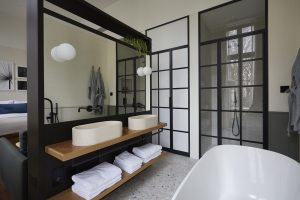
Image credit: Inhabit Hotel / Tim Evan Cook
HK: The finishes and materials that are now available are taking the conversation further. What are designers looking for from suppliers?
LC-C: Lighting and the quality of light is more important than ever, both in bathroom products and fittings and in discussing wellness more broadly. With the trend to introduce as much natural light as possible, it is interesting to see that in some cases the traditional guestroom layout is being flipped, giving the bathroom access to the natural light source. This injects an immediate sense of spa and wellbeing into the bathroom and then, as you step away from the light into the bedroom, it operates on a more circadian level. Temperature is another important point when looking at materials and surfaces in the bathroom, which needs to be considered when designing transitions from, for example, the shower to the bathroom floor.
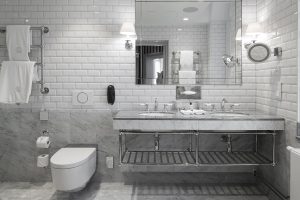
Image credit: Geberit
HK: Having covered lighting and scent, what about touch?
RH: For us, using materials that are authentic is important. There are all sorts of advantages to this aside from the materiality of the surface. Questions around carbon and circularity are usually better if you are using a material in its original form, rather than something that has been produced to look like something else. This can be more expensive, but as these choices reflect on and become part of the brand, designers and clients need to be both conscious about and understand the process behind, the products being specified.
BB: There is an increased honesty to materials that are being used, with everything becoming more pared back right now, as the concept of quiet luxury gains traction. Designers, operators and end users are all placing a greater value on this simplicity in design and it is an aesthetic that works beautifully with ideas of wellness and wellbeing, as it inherently introduces a sense of calmness.

Image credit: Patrick Locqueneux / Blacksheep
CM: Guidelines for the mid-scale brands have also become looser. Working with a brand like Mercure, there is a focus on taking inspiration from localisation concepts, which in turn can be translated into materiality. Inspiration is taken from local materials and then introduced as a more subtle reference running through a design. While there is still a brand story, materials give each location a unique spin.
WL: The idea of quiet luxury is interesting, as it is not just about being zen. You can have bold colour and other elements, as, in my opinion, quiet luxury is about spaces that just feel good, without necessarily knowing why. It is a feeling and a sense of something that gives, rather than takes.
HK: How do you create a space that leaves a person feeling good without necessarily knowing why?
WL: That is the magic of being a designer and integrating all those sensory elements, while really understanding who you are designing for. We often look at nature and biophilic design as points of inspiration, because nature gives back and refuels. That is how I want my interiors to feel, and what I want to deliver. There is no easy answer, it is a question of experimentation, trial and error.
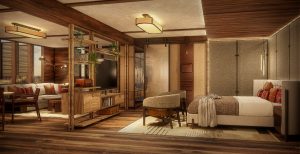
Image credit: Blacksheep
HK: Finally, inclusive design is an important part of the wellness conversation. What do designers need to consider when creating these moments of wellness and wonder in bathrooms, but also ensuring that we are designing for accessibility and inclusivity?
WL: As designers it is about engaging the stakeholders. We put things into place, but we can’t be experts in all fields, so engage with people, find out what is required. It is definitely more time consuming, but you learn a lot and it is a rewarding process that makes the design experience so much richer.
BB: As designers we thrive on stories and bringing those into designs – we need to harness that creativity to enrich the hospitality experience by incorporating these new and diverse stories into a design, from sound and lighting through to grab rails.
RH: I think the days are gone where accessible, or non-accessible is a thing – it should just be about inclusive environments we are creating for everybody.
While the wellness and wellbeing design journey might be well on its way, it is clear that the path is as divergent as the end user. Increasingly it is about both the individual and the community and importantly, the points at which these ideas intercept. Engaging all the senses through multiple touchpoints of design might be a tall order, but it is one which it would appear, designers and suppliers are embracing and integrating into the hotel and hospitality experience.
Geberit is one of our Recommended Suppliers and regularly features in our Supplier News section of the website. If you are interested in becoming one of our Recommended Suppliers, please email Katy Phillips.
Main image credit: Design Command





